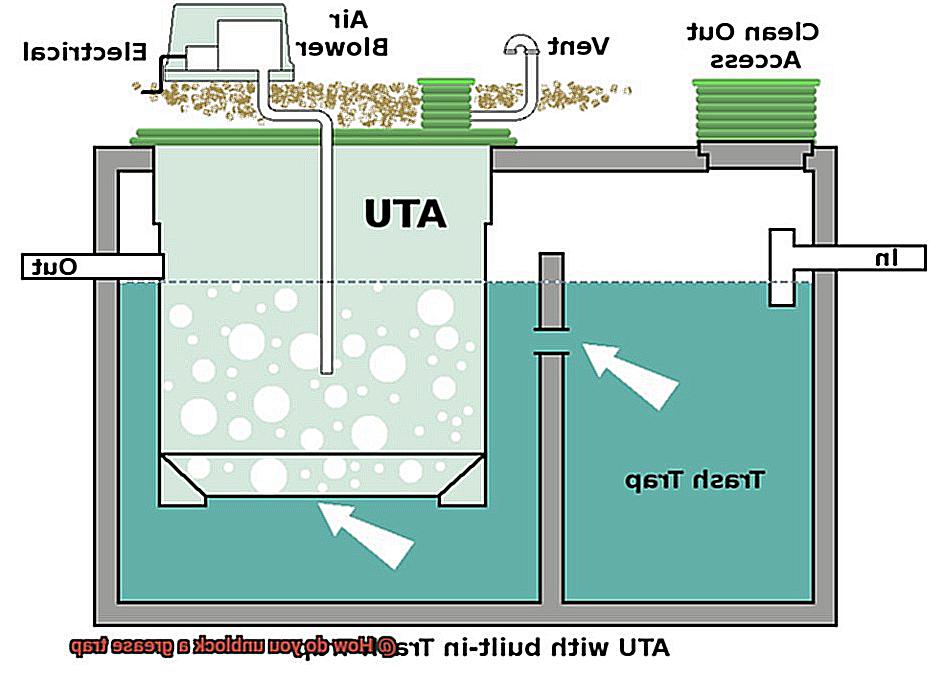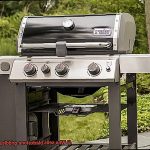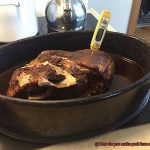Is your kitchen giving off a funky smell that’s making you queasy? It could be a blocked grease trap. This is a common problem in commercial kitchens that can cause major headaches like slow drainage, nasty odors, and even backups. But don’t worry, we’ve got your back. In this blog post, we’ll give you the lowdown on how to unblock a grease trap.
First things first: what is a grease trap? It’s a plumbing device that captures grease and other solids before they enter the wastewater system. A crucial part of any restaurant or commercial kitchen, it can get clogged over time.
Sure, there are commercial-grade cleaners out there that can do the job for you, but they’re expensive and not always eco-friendly. That’s why we’re going to share some DIY tips with you that are both budget-friendly and environmentally conscious.
Whether you’re a restaurant owner or just someone who wants to keep their kitchen in tip-top shape, this post is for you. So sit tight and read on to learn how to unblock your grease trap like a pro – and say goodbye to those unpleasant odors once and for all.
Contents
What is a Grease Trap?
A grease trap, also known as a grease interceptor or grease separator, is a plumbing device that prevents fats, oils, and grease (FOG) from entering the sewer system. FOG substances can solidify and accumulate in pipes, leading to blockages and costly repairs.
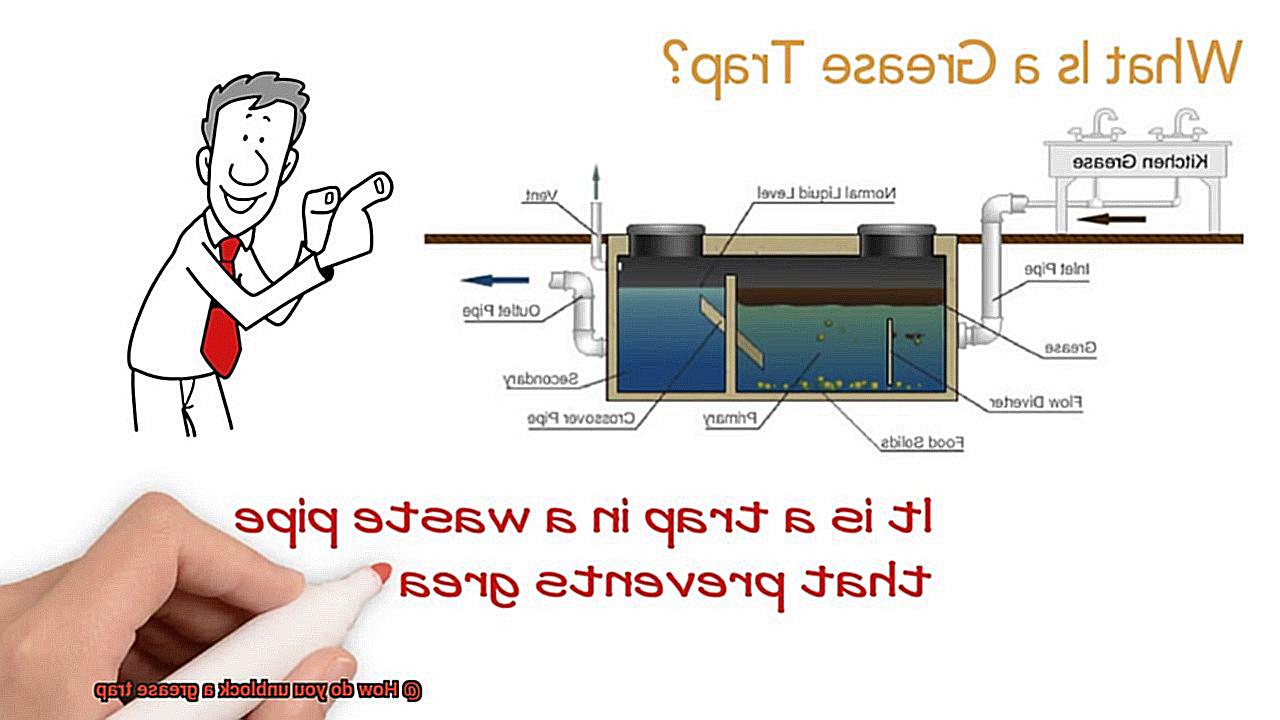
Grease traps work by slowing down the flow of wastewater so that it can cool down. As it cools, the FOG rises to the top of the trap and solidifies, while the water continues to flow out through the bottom of the trap. This separation process allows for easy removal of FOG buildup. Grease traps come in various sizes and types, from small under-sink models to large outdoor units made of plastic, steel or concrete.
However, no matter what size or type of grease trap you have, regular maintenance and cleaning are crucial. Most local municipalities have regulations in place requiring regular maintenance and cleaning of grease traps to ensure they continue to function properly. Failure to comply with these regulations can result in fines and other penalties.
To keep your grease trap functioning properly, it’s important to locate and access the trap periodically. In most cases, this will require the use of a wrench or other tool to remove the cover. Once the cover has been removed, it’s time to remove any grease and debris inside the trap. This can be done manually using a scoop or shovel, or with a wet vacuum cleaner.
After removing all debris from the trap, it’s important to clean it thoroughly using hot water and soap or a degreaser. This will help to remove any remaining buildup and ensure that the trap is functioning properly. Finally, replace the cover and test the trap to ensure proper drainage.
Why Unblock a Grease Trap?
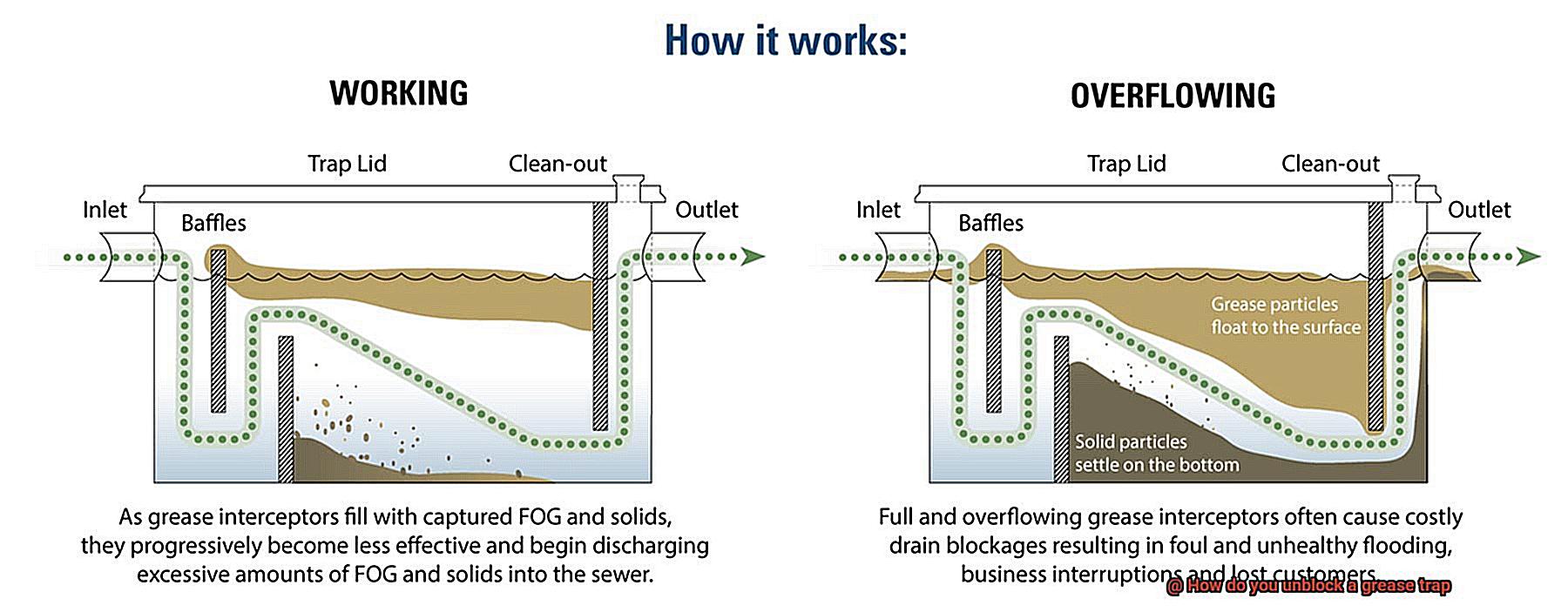
Blocked grease traps can cause slow draining water, foul odors, and even backups in your plumbing system. But why is unblocking a grease trap so crucial? Let’s explore.
Firstly, preventing FOG buildup is essential. FOG, or fats, oils, and grease, is one of the most common causes of blocked drains in commercial kitchens. If allowed to accumulate in your grease trap, it will slow down your kitchen’s flow and create an unpleasant environment. It’s like trying to run a marathon with a backpack full of bricks – it’s going to be tough.
Maintaining hygiene is another top priority. When your grease trap is obstructed, it can become a breeding ground for bacteria and other harmful microorganisms. This can pose a significant health hazard for your employees and customers, especially if the blockage leads to sewage backup. Nobody wants that kind of mess in their kitchen.
Lastly, meeting regulatory compliance is critical for any business owner. Most local health departments require commercial kitchens to maintain their grease traps and ensure they are functioning correctly. Failure to do so can result in hefty fines or even closure of your business. It’s like getting pulled over for speeding – you can’t say you weren’t warned.
In summary, unblocking a grease trap is essential for maintaining hygiene, preventing FOG buildup, and meeting regulatory compliance. Don’t wait until it’s too late – have a regular maintenance schedule and address any issues promptly to avoid costly repairs and downtime for your business. Think of it like giving your car an oil change to prevent costly repairs down the road – investing in regular maintenance today will save you time and money tomorrow.
Locating and Accessing the Trap
It’s not just an inconvenience; it poses a significant health hazard to your staff and customers. But fear not. I’m here to guide you through the essential first steps of locating and accessing your commercial kitchen’s grease trap so that you can get back to business as usual.
- First things first: finding the grease trap. Typically, it’s located in the floor near the sink or dishwasher, but depending on the layout of your kitchen, it may be elsewhere. You must know precisely where it is before proceeding any further.
- Next up: accessing the trap. Most grease traps have a cover that can be removed for cleaning and maintenance purposes. But be warned – that cover may be secured with screws or bolts, so ensure you have all the necessary tools on hand before attempting to remove it.
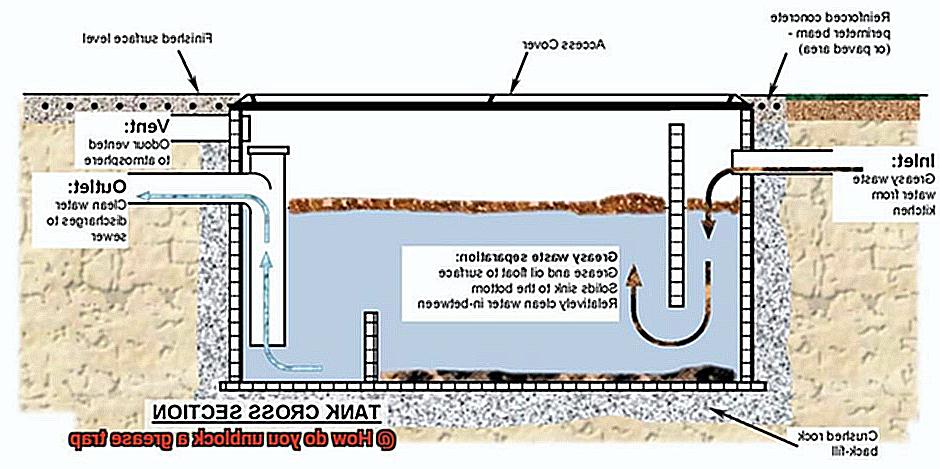
Before taking off the cover, it’s vital to turn off any equipment connected to the grease trap, such as sinks or dishwashers. This will prevent any wastewater from flowing into the trap during the cleaning process.
Once you’ve removed the cover, take a good look inside the trap for any visible blockages. You may need to use a flashlight to get a better view of what’s going on inside. If there is a visible blockage, try removing it with a scoop or spatula.
If no visible blockages are present, it’s time to break out the heavy-duty equipment: plumbing snakes and hydro jetting gear. These tools are designed to tackle even the toughest clogs deep in your pipes leading up to and from the grease trap.
Removing the Grease and Debris
As an expert on removing grease and debris from grease traps, I’m here to guide you through the process step-by-step.
The first step in unblocking a grease trap is to remove any accumulated grease and debris. This is a crucial step to ensure that the trap is functioning correctly and efficiently. But how do we do it?
Enter the trusty grease trap scraper. This specialized tool is designed to reach deep into the trap and scrape off any built-up gunk. Just be sure to wear gloves and protective clothing to avoid slipping on the slippery grease. Alternatively, you can use hot water to break down the build-up and flush out any blockages that may be lurking in the trap.
But here’s a word of caution – never use chemical cleaners to clean your grease trap. Not only can they damage the trap’s components, but they can also harm the environment. Instead, opt for natural cleaners such as baking soda and vinegar or citrus-based cleaners.
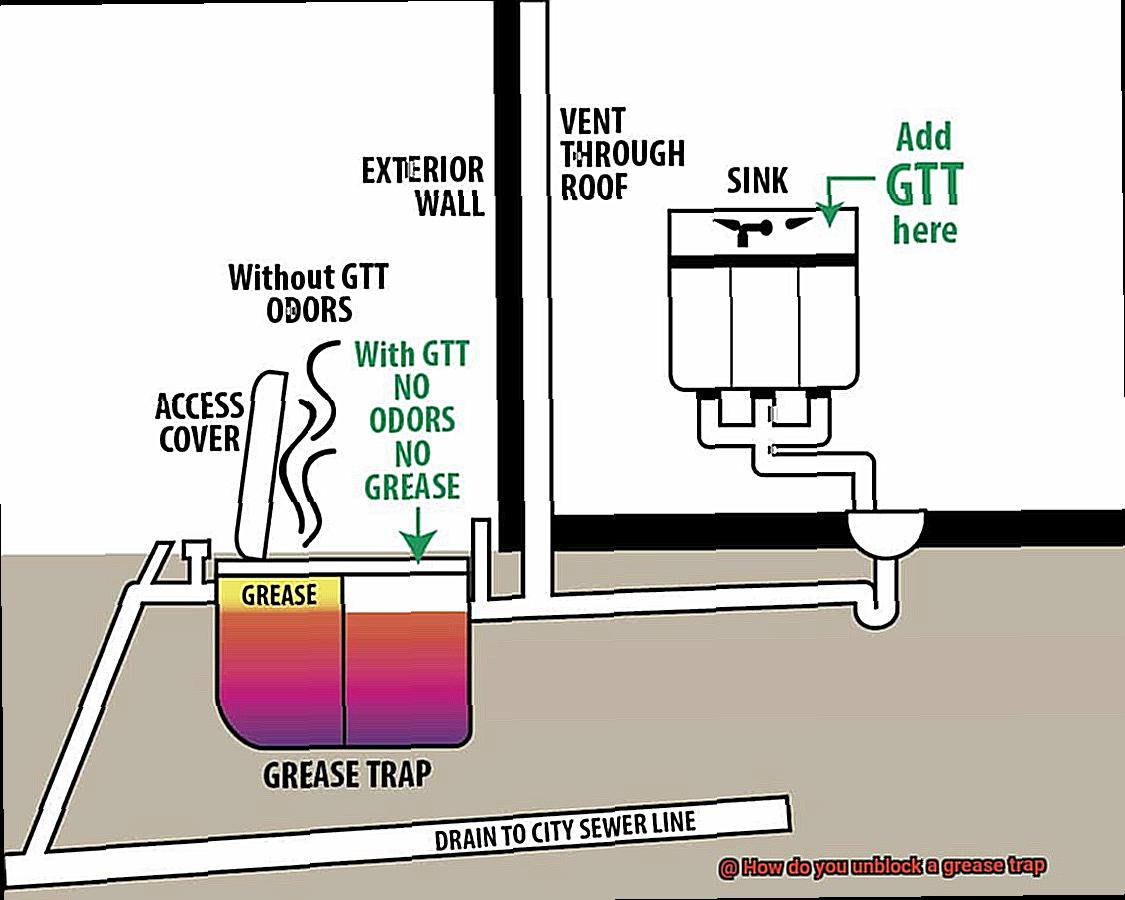
Regular cleaning of your grease trap is crucial in preventing future blockages. Depending on usage, it’s recommended to have your trap cleaned at least once every three months. This will not only keep your kitchen running smoothly but will also reduce the risk of potential environmental hazards.
Cleaning the Trap Thoroughly
Fats, oils, and grease (FOG) can accumulate in the trap over time, causing it to become clogged and preventing it from doing its job. But fear not, my friends, for I am here to guide you through the process of cleaning your grease trap thoroughly.
First and foremost, turn off the water supply. This step is essential to prevent any more wastewater from entering the trap during the cleaning process. Once that’s done, it’s time to remove the cover of the trap. Depending on the type of trap you have, you may need a special tool for this.
Now comes the fun part – removing the contents of the trap. Use a scoop or container for this step, being sure to dispose of the material correctly and in compliance with local regulations. It’s not exactly glamorous work, but it’s necessary to keep your kitchen running smoothly.
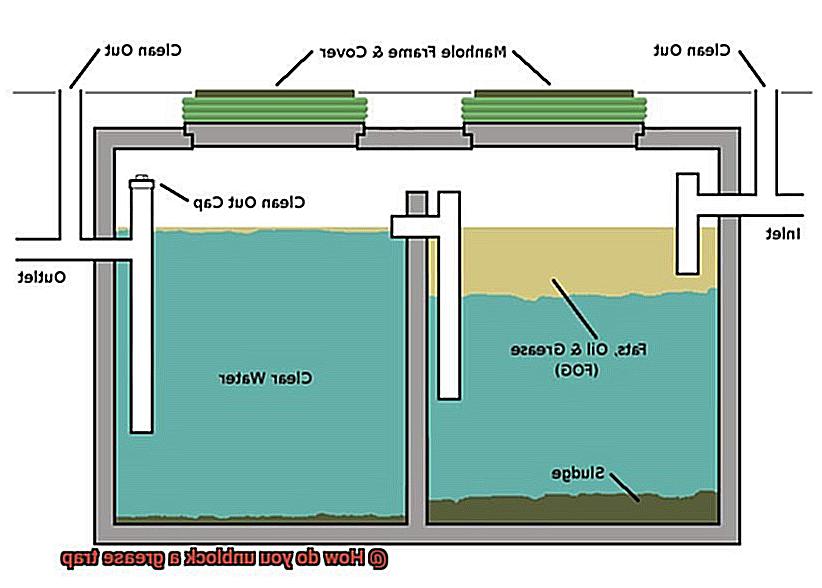
After removing the contents, it’s time to scrape and clean the inside of the trap thoroughly. Use a scraper or brush to remove any solid debris stuck to the walls and bottom of the trap. Don’t forget to wear gloves and protective gear during this process.
Once you’ve scraped and cleaned the inside of the trap, rinse it out thoroughly with hot water. This step will help remove any remaining debris and ensure that your grease trap is sparkling clean.
Last but not least, replace the cover of the grease trap and turn on the water supply. Voila. Your grease trap is now clean and ready to do its job once again.
Regular cleaning is key to preventing blockages and ensuring that your grease trap functions correctly. Depending on your usage and local regulations, you may need to clean your trap as often as once a month. Here are some additional tips to keep in mind:
- Keep a log of when you clean your grease trap to ensure that you’re meeting local regulations.
- Educate your staff on the importance of properly disposing of FOG to prevent clogs in the trap.
- Consider investing in a grease trap maintenance program to ensure that your trap is always clean and functioning correctly.
Testing the Drainage of the Trap
Don’t let a blocked grease trap bring your kitchen to a halt. Before you start cleaning or calling in a plumber, it’s essential to test the drainage of the trap.
First things first, turn off any equipment that may be contributing to the blockage. Then, grab a bucket filled with water and pour it slowly down each drain that leads to the grease trap. Observe how quickly the water drains and if there are any signs of backup or slow drainage.
If the water drains slowly or not at all, it’s a clear indication that there is a blockage in the pipes leading to the trap. In this case, it’s best to call in a professional to use a plumber’s snake or hydro jetting to remove the obstruction and get your kitchen back in business.
However, if the water drains normally down the pipes leading to the trap but does not drain from the trap itself, this indicates a blockage within the trap. Fear not. You can remove this blockage by using a specialized grease trap cleaning product or manually removing any solidified grease or debris from within the trap.
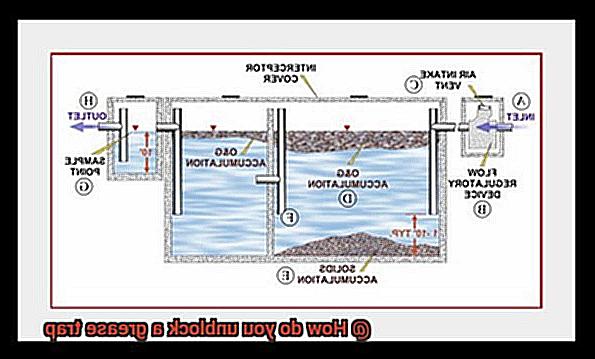
Testing the drainage of the trap is an essential step in determining where exactly the blockage is located and what steps need to be taken next to unblock it. So don’t neglect this crucial step. Regular cleaning and maintenance of your grease trap is vital to keeping your kitchen running smoothly. Remember, prevention is always better than cure.
Here are some additional tips for maintaining your grease trap:
Professional Assistance
You know how messy and frustrating the process can be. While it may be tempting to tackle the problem on your own, seeking professional assistance is always the best way to go. Here’s why:
- Expertise: Grease traps can be complex and difficult to navigate, especially for those who are inexperienced with plumbing or restaurant equipment. A professional plumber or restaurant equipment technician has the expertise and tools necessary to properly diagnose and fix any issues with your grease trap. They have the knowledge and experience to handle any situation that may arise.
- Prevention: Not only can professionals fix existing issues with your grease trap, but they can also advise you on proper maintenance and cleaning techniques to prevent future blockages. This proactive approach can save you time and money in the long run by preventing costly repairs or replacements.
- Reputation: It is essential to choose a reputable and experienced professional for this job. Look for someone who has experience working with grease traps specifically, and who has positive reviews from previous customers. This will ensure that the job is done correctly and efficiently, giving you peace of mind.
- Safety: Attempting to unblock a grease trap on your own could cause further damage or even create a safety hazard. Using the wrong type of cleaning product, for example, could react with the grease and cause an explosion. Seeking professional assistance is always the safest and most effective option when it comes to unblocking a grease trap.
BMCYujPuN6U” >
Conclusion
In conclusion, a blocked grease trap can wreak havoc on commercial kitchens, causing slow drainage, foul odors, and even backups. However, with regular maintenance and cleaning, you can prevent these issues from ever occurring. Don’t break the bank by opting for expensive commercial-grade cleaners; instead, try natural cleaners like baking soda and vinegar or citrus-based cleaners that are budget-friendly and environmentally conscious.
To unblock a grease trap, start by locating and accessing it. Before removing the cover, make sure to turn off any equipment connected to the trap. Once inside, use a scraper or container to remove accumulated grease and debris before giving it a thorough cleaning with hot water and soap or degreaser.
Testing the drainage of the trap is crucial in pinpointing where the blockage lies and determining what steps need to be taken next. For complex situations that require more than just DIY tips, seek assistance from reputable plumbers or restaurant equipment technicians.
Prevention is key when it comes to maintaining hygiene standards in your commercial kitchen. Regular maintenance, proper disposal of FOG substances, keeping a log of when you clean your grease trap, and educating staff on proper disposal techniques can all help prevent future blockages.

